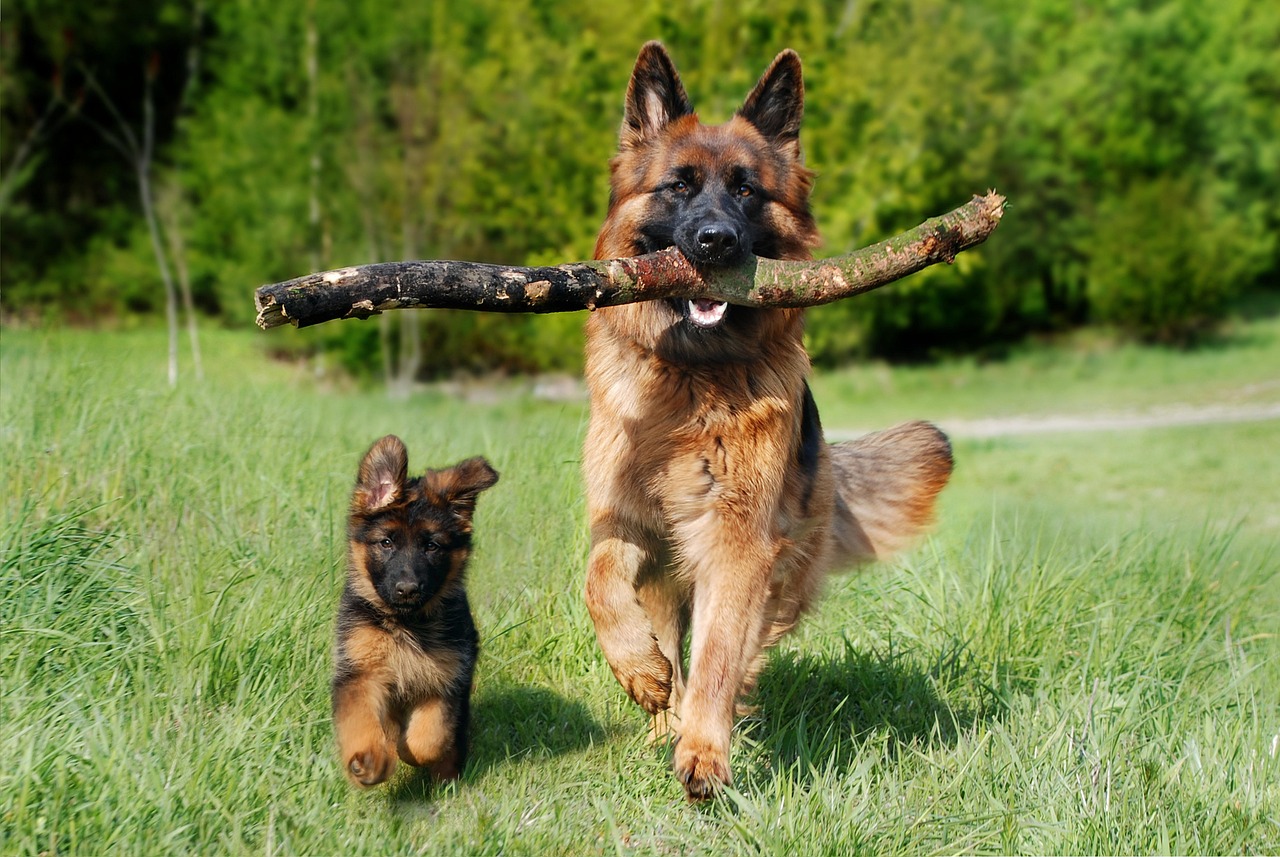Have you ever wondered what your dog might be trying to tell you? Engaging in conversations with our furry friends can deepen the bond we share and enhance our understanding of their needs and emotions. From playful barks to gentle whines, dogs communicate in ways that often go unnoticed. In this blog, we will delve into the nuances of canine communication and explore how to interpret their signals more effectively. I will let you know precisely!
Understanding Canine Body Language

Tail Movements and Their Meanings
Dogs communicate a great deal through their tails. A wagging tail often indicates excitement or happiness, but the speed and height of the wag can vary in meaning. For instance, a tail held high and wagging quickly typically signifies joy, while a slow wag at a lower position may suggest uncertainty or caution. Conversely, if a dog’s tail is tucked between its legs, this could indicate fear or submission. Observing these subtle differences can provide insight into your dog’s emotional state.
Facial Expressions: What They Reveal
A dog’s face can convey a wide range of emotions. The position of their ears, the openness of their mouth, and even the look in their eyes can tell you how they are feeling. For example, relaxed ears and soft eyes usually mean your dog is content and comfortable. On the other hand, raised ears and a tense jaw may indicate alertness or anxiety. Learning to read these facial cues can significantly enhance your understanding of your dog’s mood.
The Importance of Posture
How a dog carries itself can reveal much about its feelings and intentions. A confident dog may stand tall with its chest out, while a fearful dog might crouch low to the ground. Additionally, playful dogs often exhibit an inviting posture known as the “play bow,” where they lower their front legs while keeping their rear end up. Recognizing these postural signals allows you to gauge your dog’s comfort level in various situations.
The Sounds Dogs Make: Beyond Barking

Barks: Different Tones for Different Messages
Barking is one of the most common forms of communication for dogs, but not all barks are created equal. A sharp, short bark might signal excitement or alertness, while longer, drawn-out barks could indicate distress or boredom. Understanding the context in which barking occurs—such as during playtime versus when strangers approach—can help you interpret what your dog is trying to convey.
Whines and Whimpers: Signs of Need
Whining is often associated with requests for attention or signs of discomfort. If your dog whines when it wants to go outside or when it’s hungry, it’s likely trying to communicate a specific need. However, excessive whining could also indicate anxiety or stress, particularly if it occurs during situations that cause fear or uncertainty.
Growls: A Warning Signal
While growling can sometimes be alarming for pet owners, it’s essential to understand that growling is a form of communication used by dogs to express discomfort or warning. A low growl might signify that your dog feels threatened or needs space, while playful growling during playtime can indicate excitement and engagement. Paying attention to the context surrounding growling will help you determine whether it’s a sign of aggression or playfulness.
Interpreting Behavioral Signals
Dogs are social creatures that thrive on interaction with both humans and other animals. They often engage in behaviors that signal their desire for companionship or playfulness. For instance, if your dog brings you a toy and drops it at your feet while looking up at you expectantly, it’s signaling an invitation to play together. Recognizing these social cues helps strengthen the bond between you and your furry friend.
Avoidance Behaviors: Signs of Discomfort
Sometimes dogs will exhibit avoidance behaviors when they feel uncomfortable in certain situations. This might include turning away from an individual they find threatening or attempting to hide behind furniture when loud noises occur. Being aware of these signals is crucial; it allows you to intervene appropriately by either providing reassurance or removing them from stressful environments.
Many dogs show affection through physical closeness; leaning against you or resting their head on your lap are common signs that they trust you and feel safe in your presence. Grooming behaviors such as licking can also signify affection or bonding; however, excessive licking might require further attention if it seems compulsive rather than affectionate.
Cues During Training Sessions
During training sessions, observing how your dog responds to commands can provide valuable insights into their understanding and willingness to learn. A quick response followed by eagerness suggests that your dog is engaged and excited about learning new tricks. If they seem hesitant or confused after giving a command multiple times without success, it may be time to adjust your approach to ensure clarity in communication.
When dogs make mistakes during training—like not following commands—how they react can indicate their feelings about the situation. If they appear anxious after being corrected, this may suggest that they need more positive reinforcement rather than punishment-based training methods. Understanding these reactions will help create an effective learning environment based on trust rather than fear.
As you work with your dog on commands like “sit” or “stay,” pay attention to how well they recognize cues over time. If they respond consistently after several repetitions without needing additional prompts from you, this indicates successful communication development between both parties involved in training sessions.
Various environmental factors can influence how dogs behave and communicate their needs effectively; identifying these triggers is vital for maintaining harmony within households where pets reside alongside humans! Loud noises such as thunderstorms may cause anxiety leading dogs into hiding spots seeking refuge from perceived danger; recognizing these patterns allows caregivers like yourself better manage situations proactively before escalation occurs!
Exposing dogs regularly to different environments—including parks filled with other animals—helps develop essential social skills necessary for healthy interactions throughout life stages! Engaging them positively with various stimuli promotes adaptability enhancing overall confidence levels making future encounters less daunting!
Just like humans have personal space preferences so do our furry friends! Some may enjoy cuddling close while others prefer keeping distance until comfortable enough establishing trust first! Respecting boundaries ensures healthier relationships fostering mutual respect between owner-pet dynamics ultimately resulting happier cohabitation experiences overall!
Changes in appetite often reflect underlying health issues within canine companions! Sudden decreases/increases could signal various conditions ranging from dental pain digestive problems indicating need professional evaluation sooner rather than later ensuring timely intervention!
Observing shifts energy levels provides insight into potential health concerns too! If previously active pets become lethargic showing reluctance engaging favorite activities this warrants further investigation potentially indicating pain illness affecting quality life overall requiring veterinary attention promptly addressing concerns adequately ensuring well-being maintained optimally!
Regular grooming routines allow owners observe changes fur coat texture skin condition which could serve clues identifying possible allergies infections parasites affecting overall health status significantly impacting quality life experienced daily! Addressing issues promptly leads improved outcomes benefiting both parties involved fostering stronger bonds built upon trust care commitment exhibited consistently daily interactions shared together lovingly nurturing relationships formed over time spent together happily enjoying each other’s company endlessly throughout journeys embarked together side-by-side forevermore always cherishing memories created along way shared fondly reminiscing cherished moments lived fully alive vibrantly thriving harmoniously united forevermore eternally bound together inseparably intertwined everlastingly blissfully contentedly joyously living life fullest extent possible every single day!
To conclude
Understanding canine body language and communication is essential for fostering a strong bond with your dog. By paying attention to their tail movements, facial expressions, sounds, and overall behavior, you can gain valuable insights into their emotional state and needs. This knowledge not only enhances your relationship but also helps ensure your dog’s well-being and happiness.
Additional helpful tips
1. Spend time observing your dog in different situations to learn their unique behaviors.
2. Be patient when training; every dog learns at their own pace.
3. Use positive reinforcement to encourage good behavior instead of punishment.
4. Provide a safe space for your dog to retreat to when they feel overwhelmed.
5. Regularly check in with your veterinarian to monitor your dog’s health and address any concerns early on.
Main points overview
This guide highlights the importance of recognizing canine body language, vocalizations, and behavioral signals in understanding a dog’s needs and emotions. By interpreting tail movements, facial expressions, sounds, and postures, pet owners can enhance their connection with their furry companions. Additionally, being mindful of environmental factors and health indicators can further improve the quality of life for dogs, ensuring they remain happy and healthy members of the family.





